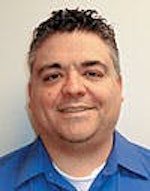Environmentalists worry that shifting agency's powers to new department will damage clean air efforts
In his movies, Arnold Schwarzenegger faced adversaries as lethal and varied as shape shifting futuristic cyborgs, terrorists, alien predators and precocious 5-year-olds. As a first-term California governor, Schwarzenegger might face his toughest battle yet if he decides to pursue a state panel recommendation to eliminate California’s Air Resources Board (CARB).
When Schwarzenegger took over as a first-term Republican governor earlier this year, he faced a budget shortfall of $15 billion. Following a campaign promise not to raise taxes, Schwarzenegger opted to cut state expenditures and commissioned a state review board, the California Performance Review, to issue a study with recommendations on reorganizing the state’s government.
The 2,500-page California Performance Review Report called for the abolition of 118 boards and commissions, a move that could save the state $32 billion during the course of five years. The panel also recommended the California Environmental Protection Agency, which houses CARB, be replaced with a Department of Environmental Protection. The new department would oversee six divisions, including an office of air quality that would take on many of the responsibilities held by CARB. That suggestion has sent environmental groups howling in disapproval.
Northern California Director of the California League of Conservation Voters Rico Mastrodonato says the elimination of CARB would be an “unmitigated disaster. We want efficient government. The move to streamline a lot of inefficient agencies or agencies where there is duplication of effort has been a long time coming. However, the Air Resources Board is one of the most effective agencies in state history,” says Mastrodonato.
Since its inception, CARB has stood at the forefront of virtually every major advance in emissions technology. Its mandates have nationwide impact. CARB spurred automakers to develop numerous breakthrough technologies, beginning with the catalytic converter in the 1960s. CARB imposed limits on auto emissions before the U.S. Environmental Protection Agency (EPA) was even established.
Dave McClune, executive director of the California Autobody Association (CAA), notes that CARB has pursued policies that protect workers, often shop employees, from dangerous emissions.
Chris Reynolds, team leader for resource conservation and protection for the California Performance Review, downplays the possible elimination of CARB. Reynolds says CARB’s work will be shifted to another division where it can continue. “It doesn’t mean anything about changing its programs or missions or anything like that. It’s just a recommendation that the governor give up a board structure for that particular program area,” says Reynolds.
Mastrodonato worries that change in structure will prevent the new clean air division from acting effectively. “That structure allows for public input. There’s transparency in its operation. Minority communities, which often suffer under the worst air quality, have a chance to participate,” he argues. “If it gets moved to an agency directly under the governor’s influence, you lose that transparency. It becomes political, and there’s no public input.”
Reynolds counters that CARB’s success instead has been the product of hard work carried on by its people. The restructuring will make a future air quality board more efficient, give it an improved chain of account and make it accountable to the public. “The people presently on the Air Resources Board are named by the governor, not elected,” says Reynolds. “If they start doing a job the public disapproves of, who gets held accountable? In the new structure, air quality is directly overseen by the secretary of California’s EPA and is drawn closer to the governor’s office. This holds the governor more accountable.”
As for criticism that the public will have less input in the proposed structure, Reynolds says that while the new agency would not hold the hearings a board structure does, it would collect public input through workshops.
Schwarzenegger has yet to indicate whether he will support the proposal. At press time, state hearings were scheduled on the recommendations. McClune told ABRN that the CAA may testify Sept. 17 at a hearing in Fresno. A second hearing was scheduled for Sept. 24.
From there, implementation becomes a complicated process involving legislators and the governor’s reorganization proposal process. The governor will pick whatever recommendations he wants to implement and submit them to the legislature, which has 60 continuous legislative days to act on the proposal. If the legislature does not act, the proposal becomes law. However, if a simple majority in either California house votes against the proposal, it will be denied.
The CARB proposal faces several large hurdles before it can be made law. The largest of those hurdles might be public opposition. “If the governor chooses to eliminate this board, the environmental community here will explode,” Mastrodonato says. “It would be a public relations disaster.”




